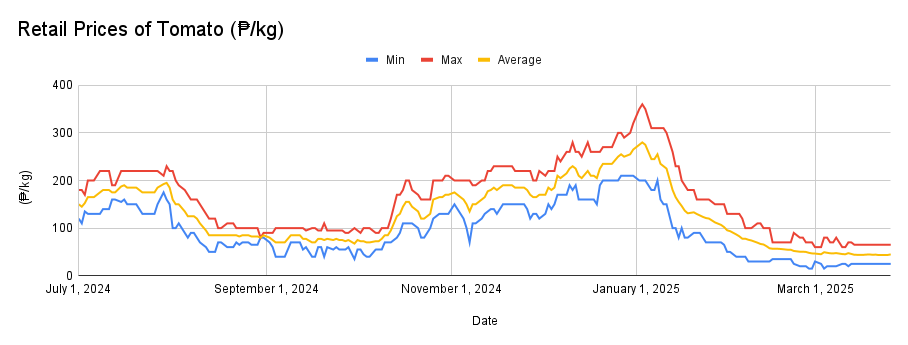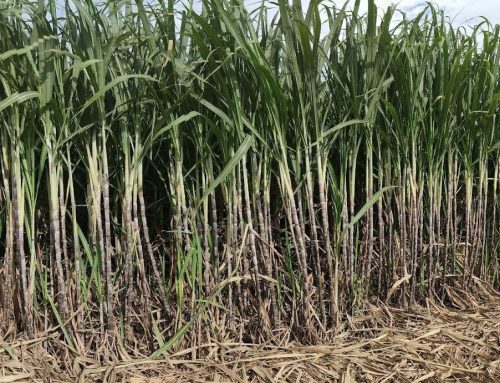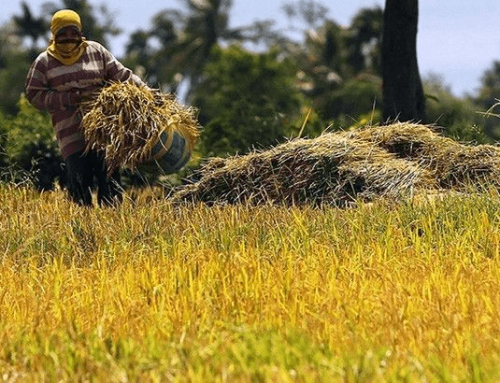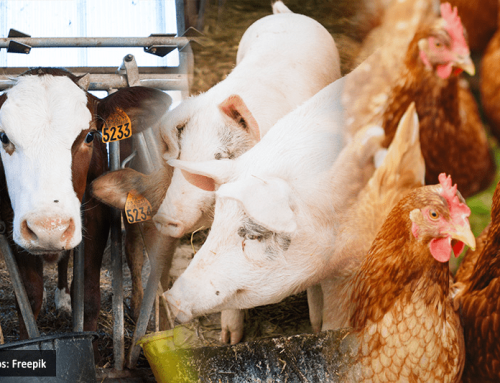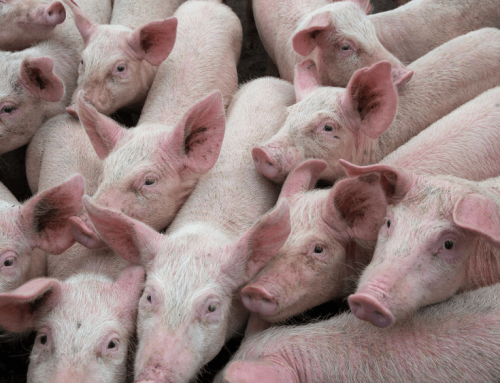In this Article
Tomato farmers in Luzon face financial losses due to declining farmgate prices, while consumers still pay high retail costs. Government interventions, market linkages, and post-harvest infrastructure are crucial for price stability.
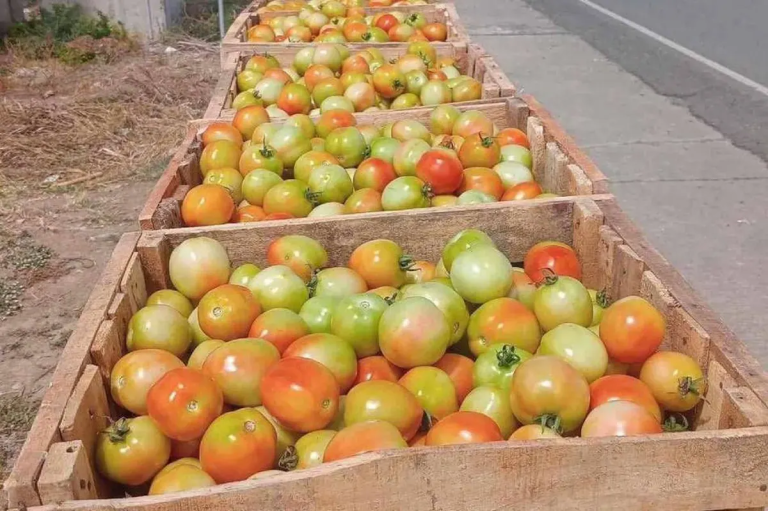
Source: ABS-CBN News
Declining Farmgate Prices Hit Tomato Farmers
Tomato farmers in North and Central Luzon are experiencing significant market challenges characterized by extreme price fluctuations during the early months of 2025. In early January 2025, tomato retail prices surged to ₱360 per kilogram (kg), a 64% increase from the ₱220/kg surge recorded in early December 2024, based on Bantay Presyo, the Department of Agriculture (DA)’s price monitoring database. This price spike followed supply disruptions due to typhoon-related damage in key vegetable-producing areas during the fourth quarter (Q4) of 2024. According to DA Assistant Secretary and Spokesperson Arnel De Mesa, tomato production fell by 45% due to these weather disturbances. A market advisory article released earlier this year further detailed the supply-related causes behind the January price surge (access the article through this link: https://tinyurl.com/AABHMarketAdvisory024).
Figure 1. Retail Price Trends of Tomatoes, 2024 – 2025
Source: DA, 2025
Figure 1 presents the retail price trends conveying the extent of volatility. Notably, the figure highlights two (2) significant price surges—first in July 2024 and again in January 2025— followed by a sharp decline. Similar declining price trends were observed in the Batong Malake Public Market (our validation market) in Los Baños, where the estimated average retail price of tomatoes declined by 90% from ₱300/kg in early January to ₱30/kg in late March. These patterns reflect the highly volatile retail market that shapes farmers’ expectations and planting decisions, resulting in even greater volatility observed in farmgate prices, where the impact of supply-demand mismatches is more pronounced and directly felt by the producers.
As prices surged in January, farmers increased their production in anticipation of strong demand. However, this reaction triggered an oversupply during the harvest season, leading to dramatic decline in farmgate price in the first quarter (Q1) of 2025. By late February, farmgate prices of tomatoes fell to just ₱4/kg, far below production and marketing costs. In early March, the farmgate prices temporarily rebounded to ₱12/kg—a 200% increase—before dropping again to ₱6/kg by mid-March (Table 1).
Table 1. Farmgate Price per Kilogram of Tomatoes, 2025
| Period | Price (₱/kg) | Price Change (₱/kg) | Percentage Change (%) |
| Late February | 4.00 | – | – |
| Early March | 12.00 | 8.00 | (↑) 200% |
| Mid-March | 6.00 | -6.00 | (↓) -50% |
Source: Data from ABS-CBN News and PhilStar, citing SINAG, 2025
According to the farmers’ group, Samahang Industriya ng Agrikultura (SINAG), these price fluctuations have created significant economic strain, particularly for farmers in Pangasinan, Nueva Ecija, and Nueva Vizcaya. In the most affected regions, the cost of harvesting and selling even exceeded potential market returns, compelling many to leave their crops unharvested. Ironically, consumers especially in Metro Manila continue to pay between ₱25/kg and ₱60/kg for tomatoes, highlighting the significant price disparity between producers and retailers.
Understanding the Causes of Tomato Price Fluctuations
The volatility in the tomato market can be viewed through the lens of the Cobweb Theory, which explains the cyclical nature of agricultural markets. Farmers tend to base their production decisions on previous market prices. They are motivated to increase production when prices are high, anticipating similarly strong returns. However, this collective response may lead to an influx of supply once the crops mature, often after the market has shifted, leading to a sharp price decrease.
The mechanism operates as follows: high prices in one production cycle encourage increased planting. When these crops mature simultaneously, the market becomes saturated, causing prices to decline sharply. Conversely, farmers reduce planting when prices drop, eventually leading to supply shortages and subsequent price increases. In the current tomato market scenario, this model manifests with particular clarity. The high prices in January prompted increased production in Luzon. The resulting oversupply in March caused a significant price decline, creating substantial economic challenges for producers. The situation was further complicated by harvest delays caused by late 2024 typhoons, which compressed harvesting windows and intensified the volume of supply entering the market simultaneously, according to SINAG Executive Secretary Jayson Cainglet.
However, it is important to emphasize that oversupply is not inherently the problem. Rather, it highlights a gap in supply chain coordination and market-responsive production planning. This situation calls for strengthened supply chain management systems and improved access to market information at the farm level. If farmers are equipped to study market trends and develop cropping calendars aligned with projected demand peaks—rather than reacting to current high prices—they will be better positioned to time their harvests to meet market needs and secure more stable returns.
Government Interventions
Given the significant price fluctuations and their impact on farmers, government interventions play a crucial role in stabilizing the market.
- DOST-PCAARRD Initiatives
The Department of Science and Technology – Philippine Council for Agriculture, Aquatic, and Natural Resources Research and Development (DOST-PCAARRD) has funded research projects on vegetables, including tomatoes, to promote sustainable production and strengthen value and supply chains. These initiatives aim to enhance crop resilience, reduce post-harvest losses, improve productivity, manage the supply chain, and support sustainable farming practices. Additionally, they seek to optimize supply chains and expand market access, ensuring greater stability in the vegetable sector.
Supply Chain Management
PCAARRD has long recognized that the problem is managing the supply chain. Many PCAARRD initiatives have developed and piloted more effective supply management methods. The supply chain models are led by local government units (LGUs), state universities and colleges (SUCs), and private extension workers. These models address inefficiencies in the agricultural value chains, particularly addressing the challenges in managing the seasonal nature of the commodity, improving supply chain coordination, and strengthening market linkages.
One supply chain management system was developed with the Municipal Agriculture Office (MAO) of Los Baños in Laguna, in collaboration with the University of the Philippines in Los Baños (UPLB). This LGU-led initiative, completed in April 2022, established a consolidation facility at the LGU trading post for post-harvest storage and distribution, enabling direct farmer-to-buyer connections with institutional markets such as restaurants and government feeding programs. One of the approaches was the development of a production and cropping calendar based on the market, ensuring a steady supply of produce throughout the year and reducing price volatility caused by seasonal surpluses and shortages.
To enhance coordination and market access, the team launched the LB Veggie Move platform (access platform through this link: https://lbveggiemove.com/), a digital tool for inventory management and online sales, while integrating the farmer-led enterprise into the KADIWA store chain. Strengthening farmer-market relationships, improving information flow, and adopting long-term SCM strategies are replicable models for scaling localized agricultural supply chain solutions.
Sustainable Vegetable Farming
The DOST-PCAARRD also funded a project led by Cagayan State University (CSU) to establish Science and Technology Community-Based Farms (STCBF), promoting sustainable lowland vegetable production in Cagayan Province. Spanning 26 hectares, the initiative empowered 75 farmer cooperators by providing agricultural inputs and financial literacy training. By integrating Good Agricultural Practices (GAP) and S&T-based technologies, the project significantly enhanced the productivity, profitability, quality, and safety of key Pinakbet vegetables, including okra, eggplant, tomato, ampalaya, sitao, squash, and pepper. As a result, farm yields increased by 13.65%, farmers’ incomes rose by 170.57%, and stronger market linkages were established. The project also addressed critical challenges such as climate risks, over-reliance on chemical inputs, and low farm gate prices. Completed in December 2024, this initiative contributed to a more stable vegetable supply and improved food security in the region, fostering long-term sustainability for local farmers.
Enhancing Tomato Disease Resistance
The DOST-PCAARRD is funding a research project led by Central Luzon State University (CLSU) in partnership with the University of Oxford to study how RNA-binding proteins (RBPs) contribute to disease resistance in Philippine open-pollinated tomatoes. Using advanced Ribonucleic Acid (RNA) biology techniques, researchers will identify key RBPs that play a crucial role in plant immunity and disease susceptibility of selected Philippine open-pollinated tomato varieties against the two most economically important diseases caused by bacterial (Ralstonia solanacearum) and fungal (Fusarium oxysporum) pathogens. The project will create a database of these proteins and establish a seed bank for disease-resistant tomato varieties. The initiative aims to utilize this emerging technology of RNA biology in the country for crop improvement. By developing more resilient tomato varieties, the project can help stabilize production, reduce crop losses, and prevent seasonal oversupply, ultimately boosting farmers’ incomes.
Prior to this, DOST-PCAARRD also funded a project implemented by the UPLB, which focused on the development of cost-effective cold chain systems and product monitoring technologies for high-value crops, particularly tomatoes and cabbage (see article by clicking this link: https://tinyurl.com/AABHMarketAdvisory024). DOST-PCAARRD’s initiatives strengthen vegetable supply chains, boost productivity, and promote sustainability. By tackling market inefficiencies, post-harvest losses, and crop diseases, these projects help enhance food security and farmer incomes, ensuring a more resilient agricultural sector.
- DA Market Linkaging Initiative
In response to the continued decline in farmgate prices of tomatoes during the harvest season, the DA assisted farmers through direct market linkages. According to DA Assistant Secretary Arnel de Mesa, their agency is helping tomato farmers find better market opportunities, including nearby public markets and Kadiwa centers, while encouraging them to coordinate with municipal agriculturists and DA regional offices for wider market access. DA Assistant Secretary Genevieve Velicaria Guevarra also mentioned that the agency has already assisted six (6) farmer groups, particularly those selling their tomatoes in Balintawak Market. The agency also emphasized the need for more cold storage facilities to manage supply and prevent excessive price drops during peak harvest.
- Operation Sagip Kamatis-an
Former Senator Kiko Pangilinan launched Operation Sagip-Kamatis-an on March 7, 2025, to rescue 11 tons (T) to 12T of tomatoes in Rizal, Nueva Ecija, amid declining farmgate prices as low as ₱4/kg to ₱5/kg in key tomato-producing areas. He also urged the LGUs to procure excess supply for feeding programs under the Sagip Saka Act, businesses directly sourced from farmers to prevent wastage, and citizens to support local produce through online platforms and farmers’ markets. For long-term solutions, he advocates for stronger farmer-buyer linkages, cold storage and processing facilities, and increased government support for transport subsidies and price stabilization to protect farmers’ livelihoods and prevent food waste.
Market Outlook
The volatility in farmgate prices of tomato, dropping to as low as ₱4/kg due to oversupply, has severely impacted farmers in North and Central Luzon. Despite a brief recovery in early March, prices fell again to ₱6/kg, highlighting market access and supply chain management inefficiencies. Farmers struggle with unsustainably low returns while consumers in Metro Manila continue paying ₱25/kg to ₱60/kg, exposing a significant price disparity. Government interventions, such as DOST-PCAARRD’s value and supply chain projects, DA’s market linkage initiatives, and Operation Sagip-Kamatis-an, provide temporary relief to farmers. Still, long-term solutions like cold storage investments, digital trade platforms, and price stabilization mechanisms are needed.
For consumers, fluctuating farmgate prices do not translate to lower retail costs, maintaining high prices in urban markets. Meanwhile, farmers take the biggest impact from price drops, often leaving crops unharvested due to labor costs exceeding profits. Without immediate and sustained reforms, the volatility in tomato prices will continue to threaten farmer livelihoods and consumer affordability. The government, private sector, and agricultural stakeholders must collaborate to implement cold storage investments, streamlined farmer-buyer connections, and price stabilization measures. Addressing these issues will ensure fairer pricing, reduced waste, and a more resilient tomato industry for producers and consumers.
Reference:
Atienza, K.A.T. (2025, March 3). Tomato oversupply exposes logistics, storage shortcomings. Business World. Retrieved March 3, 2025 from https://www.bworldonline.com/agribusiness/2025/03/03/656539/tomato-oversupply-exposes-logistics-storage-shortcomings/
Cariaso, B. (2025, March 13). Tomato farmgate price drops to P6 per kilo. PhilStar. Retrieved March 13, 2025 from https://www.philstar.com/nation/2025/03/13/2427975/tomato-farmgate-price-drops-p6-kilo
Fernandez, B. 2025, March 10. Ex-lawmaker pushes for support for tomato farmers. Business Mirror. Retrieved March 10, 2025 from https://businessmirror.com.ph/2025/03/10/ex-lawmaker-pushes-for-support-for-tomato-farmers/
Jose, K. (2025, February 26). DA sa local tomato farmers: Makipag-ugnayan sa PH gov’t para sa ‘direct market linkage’. Remate Online. Retrieved February 26, 2025 from https://remate.ph/da-sa-local-tomato-farmers-makipag-ugnayan-sa-ph-govt-para-sa-direct-market-linkage/
Ignacio, J. (2025, March 14). DA hinahanapan solusyon ang bagsak-presyo ng kamatis. Retrieved March 14, 2025 from https://www.abante.com.ph/2025/03/14/da-hinahanapan-solusyon-ang-bagsak-presyo-ng-kamatis/
Manahan, J. (2025, February 26). Farmgate price of tomatoes drop to P4 per kilo: Agri group. ABS-CBN News. Retrieved February 26, 2025 from https://www.abs-cbn.com/news/business/2025/2/26/farmgate-price-of-tomatoes-drop-to-p4-kilo-says-agri-group-1415

